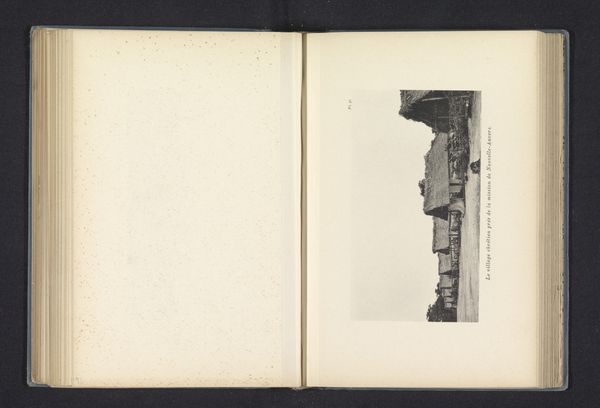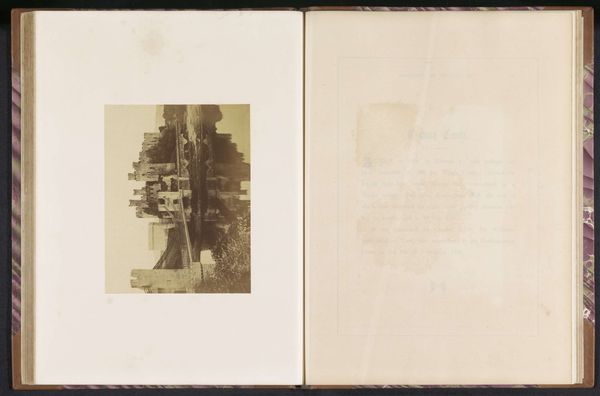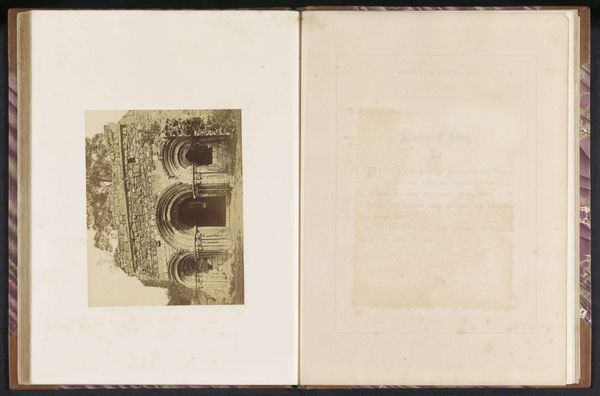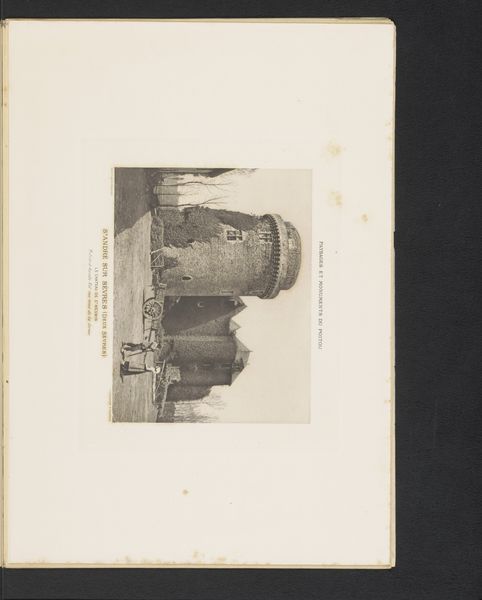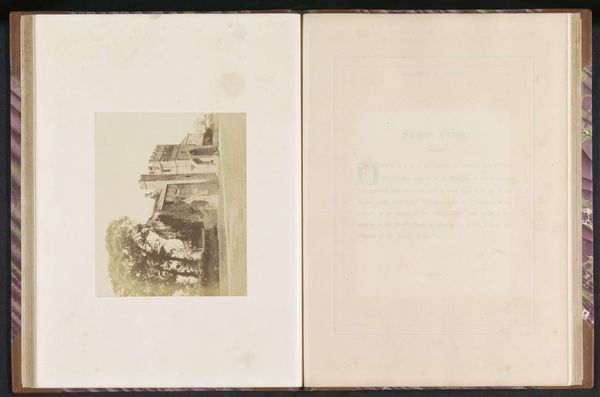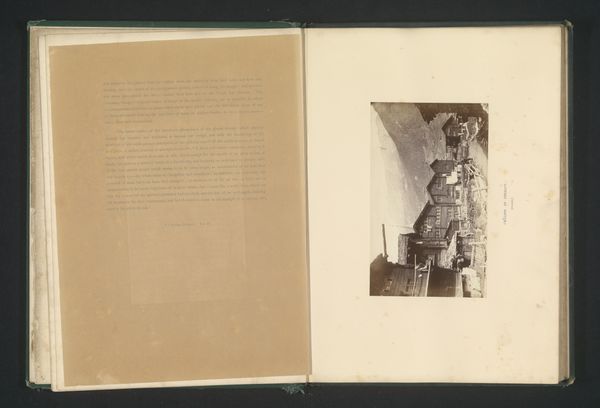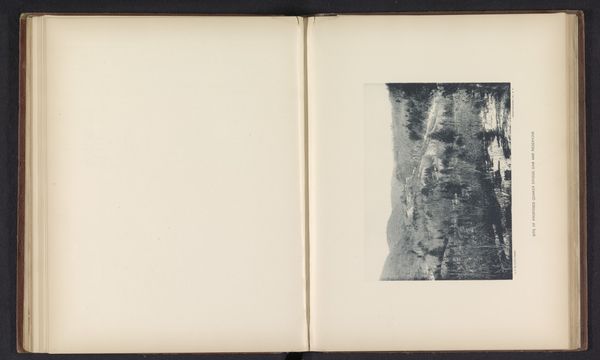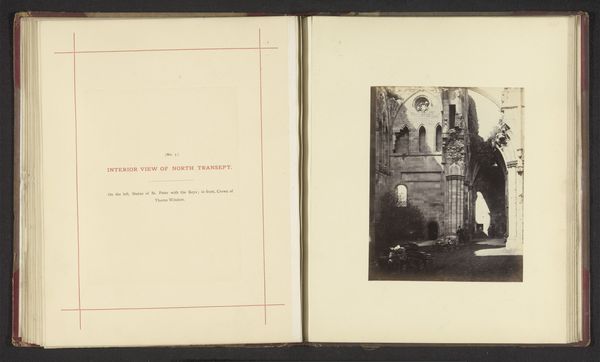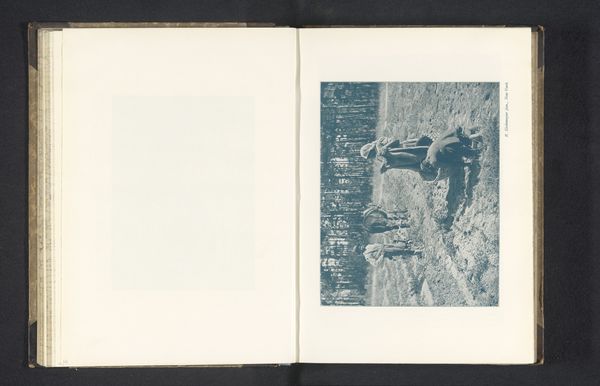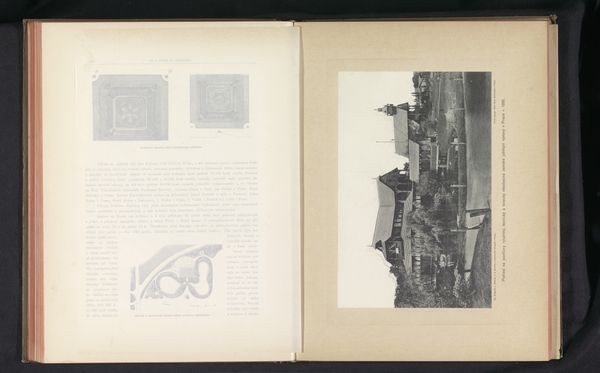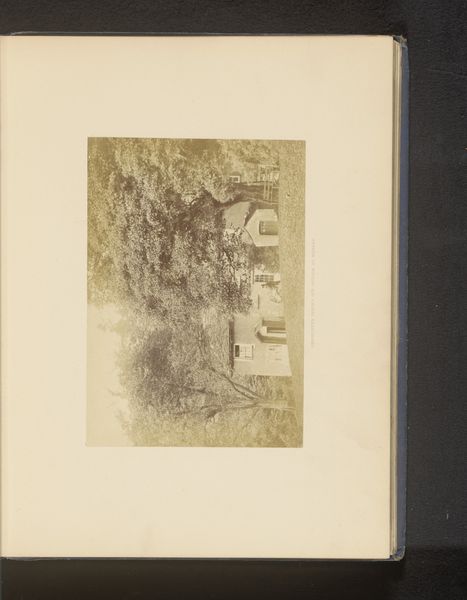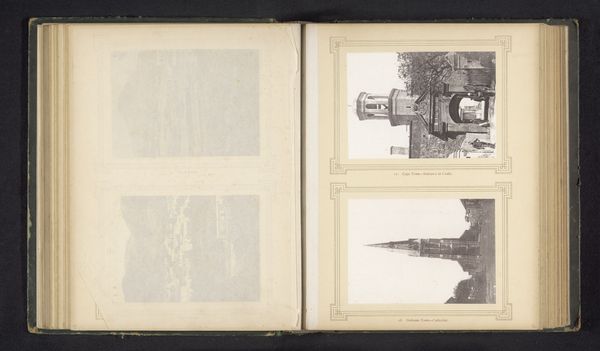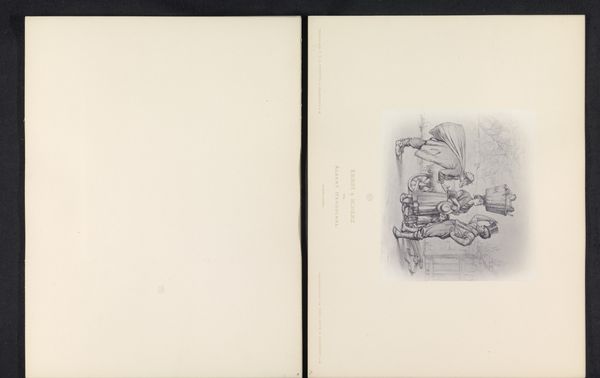
Dimensions: height 153 mm, width 182 mm
Copyright: Rijks Museum: Open Domain
Curator: Oh, this image casts a spell. It's like looking at a dream, this antique-toned photograph, sort of melancholy. Editor: What we are looking at here is "Gezicht op het Rhuddlan Castle" – a photographic print that can be dated to around 1858, produced by William Bryans. Rhuddlan Castle, situated in Wales, possesses deep historical roots and connections to the medieval struggles between the Welsh and English. Curator: Yes! Melancholy's the word. The warm sepia tones—they evoke such a poignant, old-world atmosphere. Makes you wonder about the people who might have wandered there, seen it standing tall and defiant against time... Or perhaps huddled within it. Editor: Absolutely. These Romanticist landscape views, of which this is one, often reflect larger concerns regarding nationalism and British identity. The castle represents conquest and control, serving to remind us of Wales's fraught integration into the United Kingdom. Think about that when you view it, not just about wistful ruins. Curator: I do love getting lost in those details of what’s been, as much as pondering that past history, however! The light—can you feel how soft it is?—seems to cradle the crumbling stone. It makes decay so appealing and oddly eternal. Editor: While the artistic use of light is definitely at play here, let’s not overlook how photography during that period aided in empire-building. Images like this allowed Victorian audiences to "possess" distant places visually, reinforcing Britain's reach. It's an exercise in power too. Curator: A bit problematic in the now, perhaps? But there’s beauty and pathos there all the same… Even ruins remind us that life – even when conquered – still makes art and strives to bloom anew, yes? Editor: Perhaps, yet these relics persist as echoes of those conflicts and conquests. We can find value, for sure, in scrutinizing history itself rather than being swept by purely aesthetic experiences alone. Curator: And both… That’s the best part, the blend. Now, looking at this artwork with both understandings allows something more powerful and deeper! Editor: Indeed, let's walk forward carrying these histories in the eye as we make the most meaningful engagement we can.
Comments
No comments
Be the first to comment and join the conversation on the ultimate creative platform.
